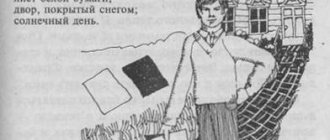Paper helps you concentrate
As we rely more and more on email, instant messenger and other digital platforms, paper is integral to keeping us informed amid the myriad of pop-ups and notifications.
Increasing productivity when working with paper has the same neurological reasons as understanding a printed textbook. When reading from a screen, the mind tends to skim and simply pick out individual words and phrases to quickly understand a topic at a surface level. But when reading in print, the mind becomes fully engaged, absorbing every word and gaining a deeper understanding of the information. This deep thought process also extends to writing on paper, with the physical process further focusing the mind and allowing it to become more involved in the task of improving attachment and finding solutions more quickly. For this reason, 51% of office workers still write down their ideas in notebooks, and 63% prefer to use paper to collaborate with colleagues and be creative. Here it is appropriate to recall “brainstorming,” which is good when using large sheets of paper and sticky notes.
An office easel with paper will help organize work
Project 'Paper in the life of a modern person'
Project topic:
"Paper in the life of a modern person"
Object of study: paper
Relevance: we have stopped appreciating and taking care of such a necessary thing as paper. Every year the demand for paper increases, and wood reserves decrease. The forest needs to be saved today.
Purpose of the work: to find out how much paper people use in modern life
Tasks:
- 1. Research in what areas of life a person uses paper;
- 2. Identify the need for paper in the everyday life of a modern person;
- 3. Research the topic of the invention of paper;
- 4. Understand the technology of its production;
- 5. Decide how the preservation of the forest is interconnected by caring for paper;
- 6. Improve the ability to work with information, analyze it, form your own opinions, judgments, and conclusions.
- 7. Learn to present the received material in electronic form.
We assumed that in modern life people have begun to use paper less, as they prefer to use the Internet and e-books. At the same time, we noticed that in our class a whole bag of paper waste accumulates in one day. And on Wednesday and Friday, when we have art and technology lessons, much more paper waste accumulates. So we still use paper, and we need it? Then why do we use it so irrationally and wastefully? Why is so much paper going to waste? We decided to look into this problem.
While working on the project, we set ourselves the following goals:
- How much paper do people use in modern life?
To achieve the goal we:
- 1. Researched in what areas of life a person uses paper;
- 2. We identified the need for paper in the daily life of a modern person;
- 3. We studied the topic of the invention of paper and production technology;
- 4. We tried to decide how the preservation of the forest is interconnected with respect for paper.
In our life there are things, objects that we use every day, without which our life is unthinkable. But in the hustle and bustle of life, we often forget about the significance of such things, we stop appreciating and taking care of them.
In the age of computer technology, when all information is stored electronically, on digital media, does a modern person use paper? Imagine yourself, modern man really uses paper and in huge quantities. We will try to convince of the need for paper in the life of a modern person.
All documents, including our very first document, the birth certificate, are made on paper. Everyone will agree that a person cannot live without documents. Further, the person can neither speak nor sit, but the first books are already being read to him, he becomes acquainted with his first authors. After a few months, he begins to look at colorful pictures in books. Then they will buy him his first album, in which he will make his first masterpiece. And there is kindergarten and school ahead, and they buy him huge quantities of notebooks, albums, notepads, cardboard, colored and writing paper. After all, without this, a child cannot learn.
Perhaps we only need paper products when we study. Nothing like this! Almost every day we use newspapers, magazines, textbooks, and teaching aids. All this is made of paper. And some still prefer to read real books rather than electronic ones. And this is also paper. Of course, there are people in the modern world who prefer to read e-books and use the Internet, but even in this case we still use paper. Cash register receipts in a store, tickets on public transport, tickets to the theater, cinema, exhibitions, and museums are made on paper. Even banknotes are made on special paper. In addition, paper serves as packaging material for many products. These include food and medicine, stationery and electronic equipment, shoes and clothing, dishes and furniture, toys and household appliances, gift wrapping paper and gift bags and much more. Each of us uses these products every day, and so we use paper. Paper is used for example in the construction industry. This is primarily wallpaper, which is made on a paper basis.
Postal products are made of paper, such as envelopes, stamps, postcards, calendars, boxes for parcels and parcels. Advertising has entered our lives. Advertising booklets, product catalogs, and other promotional products are also printed on paper.
And lastly, for the skeptics who will say that they use online stores and pay using non-cash means, we left hygiene products, which are also made of paper, and which every person uses every day. No one will deny that he uses toilet paper, napkins, paper handkerchiefs, and paper napkins every day.
Thus, having examined various spheres of human life, we were convinced that modern people use paper products every day. This is very convenient, in many ways it makes our life more comfortable and convenient.
The value of paper lies not only in its necessity in human life, but also in the fact that paper is an environmentally friendly material. The process of recycling paper in nature ranges from a few minutes to several months, depending on the type and density of the paper. Thus, by using paper rather than synthetic materials, we do not pollute the environment, since nature is able to independently recycle paper waste.
While working on the project, we will convince you of the benefits, importance and necessity of paper in our lives.
Even in ancient times, a person had a need for material on which to write. While accumulating life experience, a person understood that it needed to be passed on to the next generations. Therefore, people were looking for material that would serve as a store of information. At first, people wrote on stones, on clay plates, on wooden tablets, on leather, on birch bark. Paper was invented in China in the 2nd century AD. Everyone knows that paper is made from wood. But it was not always so. Initially, paper was made from bamboo fibers, stems of some herbs and old rags. For many years, the process of making paper was kept in the strictest confidence and was known only in the East. It was only in 704 that the process of making paper came to Europe.
The first paper mill appeared in Russia in 1564. The process of making paper is labor-intensive and time-consuming. It will take dozens of years for a forest to grow suitable for paper production. To produce paper in a modern paper mill, a small grove of trees must be cut down every day. Then the bark is peeled off the logs and crushed into chips. The chips are sorted by size on special sieves and sent for cooking. The wood is boiled in special machines to which acid is added. Then the resulting mass is bleached, crushed into fibers and sent to the papermaking workshop. Substances are added to paper raw materials; their presence in writing paper repels moisture. After this, the paper is dyed in a mixer, where dyes and pigments are added. The slurry is poured onto the mesh of the paper machine. The formation of paper fiber begins in the mesh section. This occurs by removing water from the fibrous material. After which the raw paper tape passes through a series of rollers. Some rollers squeeze out the water, others, heated by steam, dry it, others polish it, and finally the finished paper is wound into huge rolls. Thus, moving from machine to machine, wood turns into paper.
You have seen that the paper production process requires a lot of resources and human labor. This production requires a lot of electricity and water. And most importantly, the raw materials for making paper are living trees. We encourage everyone to take care of paper, use it sparingly, and not throw it away needlessly. In addition, there are collection points for waste paper (used paper), which is recycled and used to make paper again. By using paper sparingly, we thus protect the forest. And as you know, forests are our wealth, they are the green lungs of our planet.
While working on the project, we came to the conclusion that people in modern life use paper every day in all sectors of life. The demand for paper increases, accordingly, wood reserves decrease, and the number of forests decreases. We came to the conclusion that we need to be careful with paper. Thus, we will save forests from deforestation and the atmosphere from pollution.
We have continued our research in this direction and are currently working on the project “How to use paper sparingly.”






